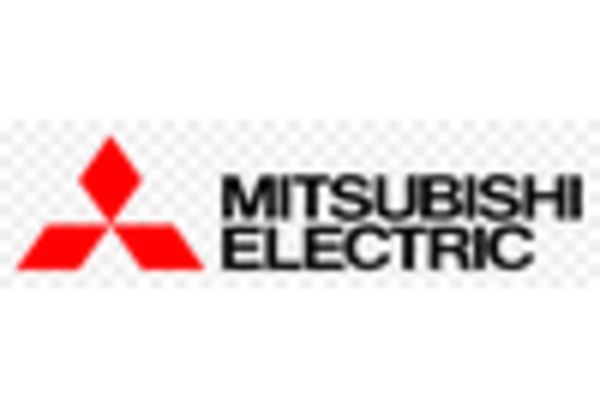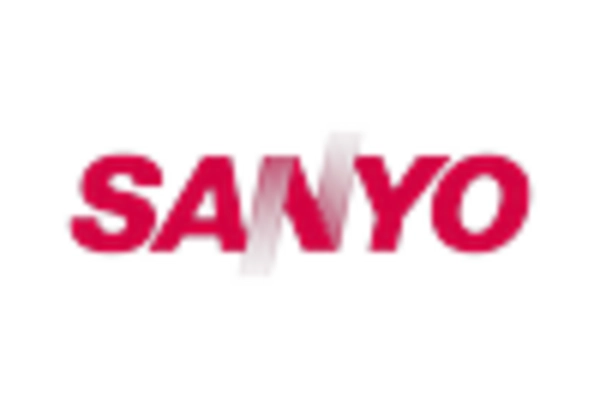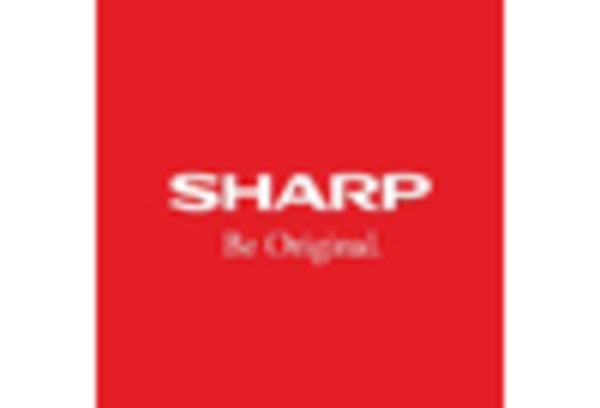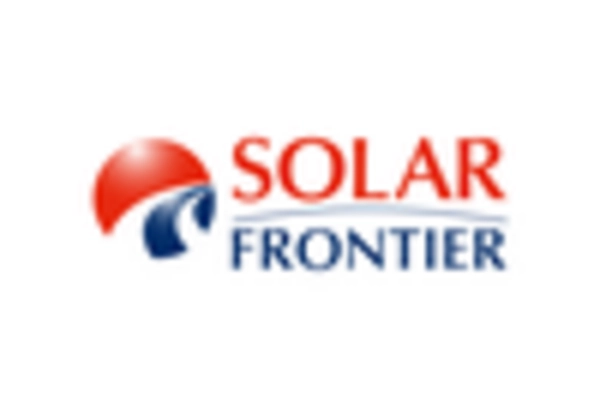Innovations in Solar Panel Efficiency
The Amorphous Silicon PV Market is witnessing continuous innovations aimed at improving solar panel efficiency. Recent advancements in thin-film technology have led to enhanced performance metrics, making amorphous silicon panels more competitive against traditional silicon panels. For instance, the efficiency of amorphous silicon panels has improved to approximately 10-12%, which, while lower than crystalline counterparts, is sufficient for specific applications such as building-integrated photovoltaics. This focus on efficiency may attract new investments and partnerships within the industry, fostering further research and development. As efficiency continues to improve, the Amorphous Silicon PV Market could see a rise in adoption rates across various sectors.
Environmental Sustainability Initiatives
The Amorphous Silicon PV Market is increasingly aligned with global sustainability initiatives. As nations strive to meet carbon reduction targets, the demand for renewable energy sources, including solar power, is expected to surge. Amorphous silicon technology, known for its lower energy consumption during production, presents an environmentally friendly alternative to traditional solar technologies. This alignment with sustainability goals may drive policy support and funding for solar projects, further enhancing the market's growth potential. In 2025, the industry could witness a significant increase in installations driven by environmental regulations and incentives aimed at promoting clean energy solutions.
Growing Demand for Flexible Solar Solutions
The Amorphous Silicon PV Market is benefiting from the increasing demand for flexible solar solutions. The lightweight and adaptable nature of amorphous silicon panels allows for integration into a variety of surfaces, including curved and irregular shapes. This versatility is particularly appealing for applications in architecture and automotive industries, where traditional rigid panels may not be suitable. As consumers and businesses seek innovative energy solutions, the market for flexible solar technologies is likely to expand. The ability to deploy amorphous silicon panels in unconventional settings may lead to new opportunities and applications, further driving growth in the Amorphous Silicon PV Market.
Rising Energy Needs and Electrification Trends
The Amorphous Silicon PV Market is poised for growth due to rising energy needs and trends toward electrification. As urbanization accelerates and populations grow, the demand for energy is expected to increase significantly. Amorphous silicon technology, with its potential for low-cost production and ease of installation, may play a crucial role in meeting these energy demands. The industry could see a surge in installations in residential, commercial, and industrial sectors as electrification trends continue to gain momentum. This growing need for sustainable energy solutions may position the Amorphous Silicon PV Market as a key player in the transition to renewable energy sources.
Cost-Effectiveness of Amorphous Silicon PV Technology
The Amorphous Silicon PV Market is experiencing a notable shift towards cost-effective solar solutions. Amorphous silicon panels are generally less expensive to produce compared to crystalline silicon alternatives, which may lead to increased adoption in various sectors. The lower manufacturing costs, combined with the ability to produce panels on flexible substrates, enhance their appeal for applications in urban environments and portable devices. As the demand for affordable renewable energy solutions rises, the Amorphous Silicon PV Market is likely to benefit from this trend, potentially capturing a larger market share. Furthermore, the cost-effectiveness of these panels may encourage investments in solar energy infrastructure, thereby stimulating growth in the industry.
















Leave a Comment